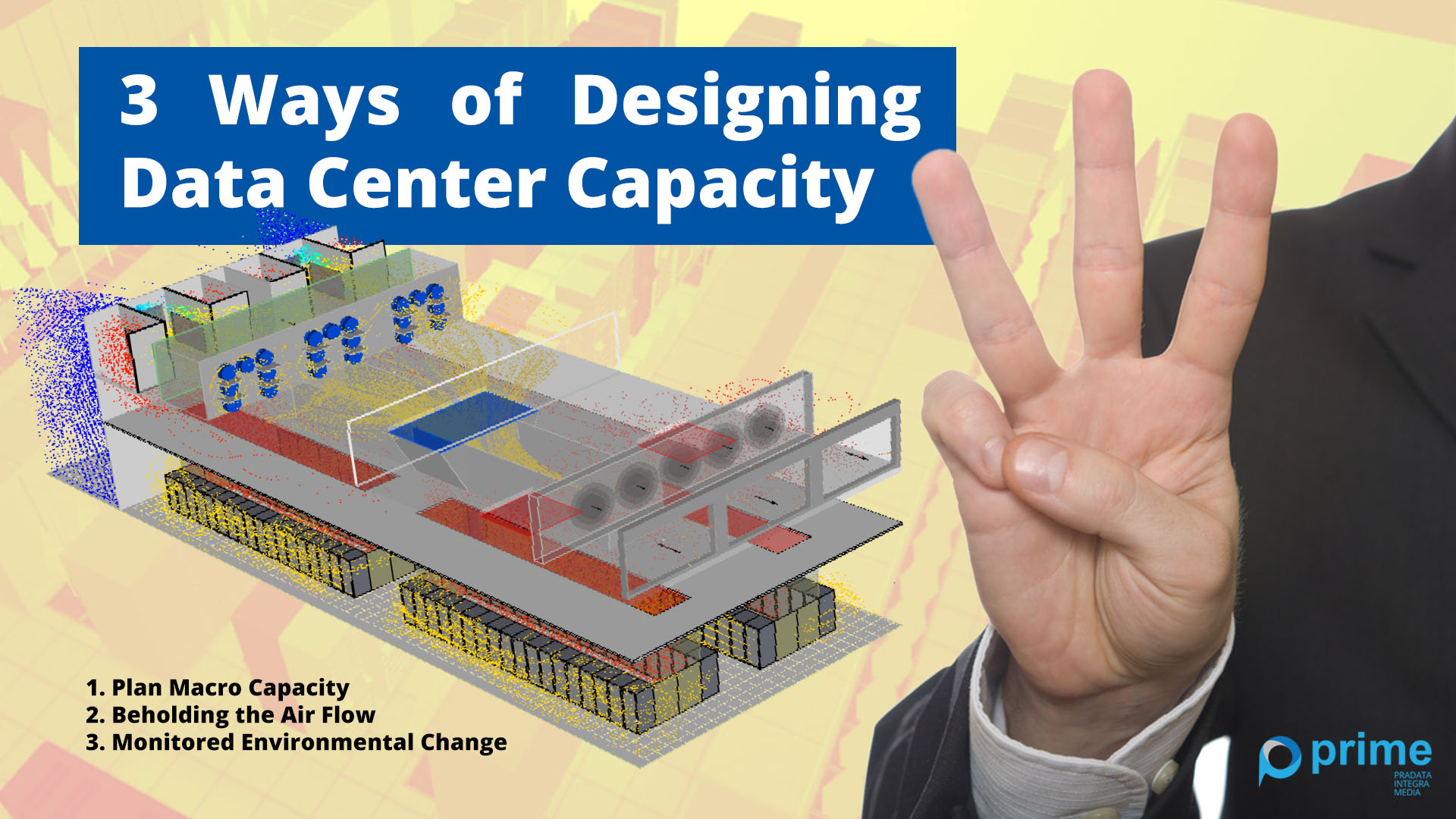 December 13, 2018 10:29 pm |
December 13, 2018 10:29 pm |
3 Ways to Design Your Data Center Capacity
Every business that wants to be at the forefront of competition must have the ability to adapt quickly to change. In the digital era, customer demands will continue to increase along with the sophistication and ease of technology that accompanies it.
Likewise, inevitable IT demands will increase. Meanwhile, data center managers and capacity designers face challenges when they must also accommodate existing information technology infrastructure. Nevertheless balancing IT needs between different departments with limited capacity and cooling of existing data centers is not an easy matter. With loss of income and damage to reputation among the potential consequences for failure of important infrastructure, the stakes are definitely high.
There are 3 ways to explore the capacity of your data center, namely:
1. The First Way to Plan Macro Capacity
The manager of a data center facility requires macro planning for the utilization that has been carried out until now. Thus, he can map the available capacity of all his data center portfolios. Individual business units usually encourage the growth of demand for IT equipment needed to meet the needs of applications with available space, power and cooling.
At the highest level, capacity limitations are based on the shortcomings of two resources: UPS power capacity or overall cooling capacity. If deficiencies in available capacity for requests are identified, facility managers can recover the situation. As a result, it requires adding more cooling and power. Another option is to migrate to a colocation provider or even build a new data center. However, the consequences of other choices are closely related to the cost factor. Effective capacity planning requires clearer planning and can be delayed until it is really important.
However, capacity planning with analytical methods (spreadsheets) still cannot be accurate in the long run because physics is not taken into account.
2. The Second Way by Beholding the Air Flow
Analytical capacity analysis can initially function, but the accuracy will decrease over time. Temperature and volume determine a cooling capacity. However, along with changes in the internal environment in adding or changing hardware, the air flow needs will change from the initial design. Meanwhile, the air volume given to the data center may not change.
So that is, the data center manager must make capacity planning based on the condition of the data center at that time, not referring to the initial design. Thus, predictive accuracy can be achieved. Therefore, shorter images are needed. Images that can integrate how the effectiveness of air flow can cool existing IT devices.
In the example below, the amount of powered vs. cooled IT equipment has changed over time. The gap between power and cooling happens to be a reduction of capacity used.

Source of Images: Futurefacilities.com
You will feel safe in the current infrastructure performance. Even though what actually happens is that long-term capacity planning is still not accurate. In addition, there is no anticipation of resistance to failure that is sufficient to overcome it. In the worst case, this can result in the need to build a new data center earlier than expected at a considerable cost. So how is facility development over time taken into account during the planning process?
3. Third Way with Monitored Environmental Change
The virtual prototype as part of the capacity planning process facilitates more accurate calculations. You can create a basic Virtual Facility and then test the environment changes in your data center safely with the Future Facilities data center management tool. With this, you can project your plan in the previous 1-3 months.
You can make the necessary repairs by using the Virtual Facility for the upcoming loads that have been planned. Data center managers can carry out trials by changing the cabinet, layout, or method of sending airflow with a certain projection load. The result is a picture of real-time cooling and in the future can be accurately determined. This changes the usual capacity planning process. Now by planning capacity through Virtual Facilities, existing facilities can continue to accommodate long-term business development.
Now there is an answer to the problem of the two previous methods, which is by making a prototype of a virtual data center environment. The virtual facility can play a role in optimizing the provision of capacity to enable the data center to service business needs reliably while supporting growth.
You can see more about how Virtual Facilities can be very helpful in planning capacity in business here.
Source: Docca, Akhil, 2018.Does your business have the capacity to change.https: //www.futurefacilities.com/blog/does-your-business-have-the-capacity-to-change/ Image Source: Future Facilities, 2018.Does your business have the capacity to change.https: //www.futurefacilities.com/blog/does-your-business-have-the-capacity-to-change/
Tags: capacity, capacity planning, Data Center, design data center capacity, Future Facilities, IT cooling, IT power, virtual facilities









